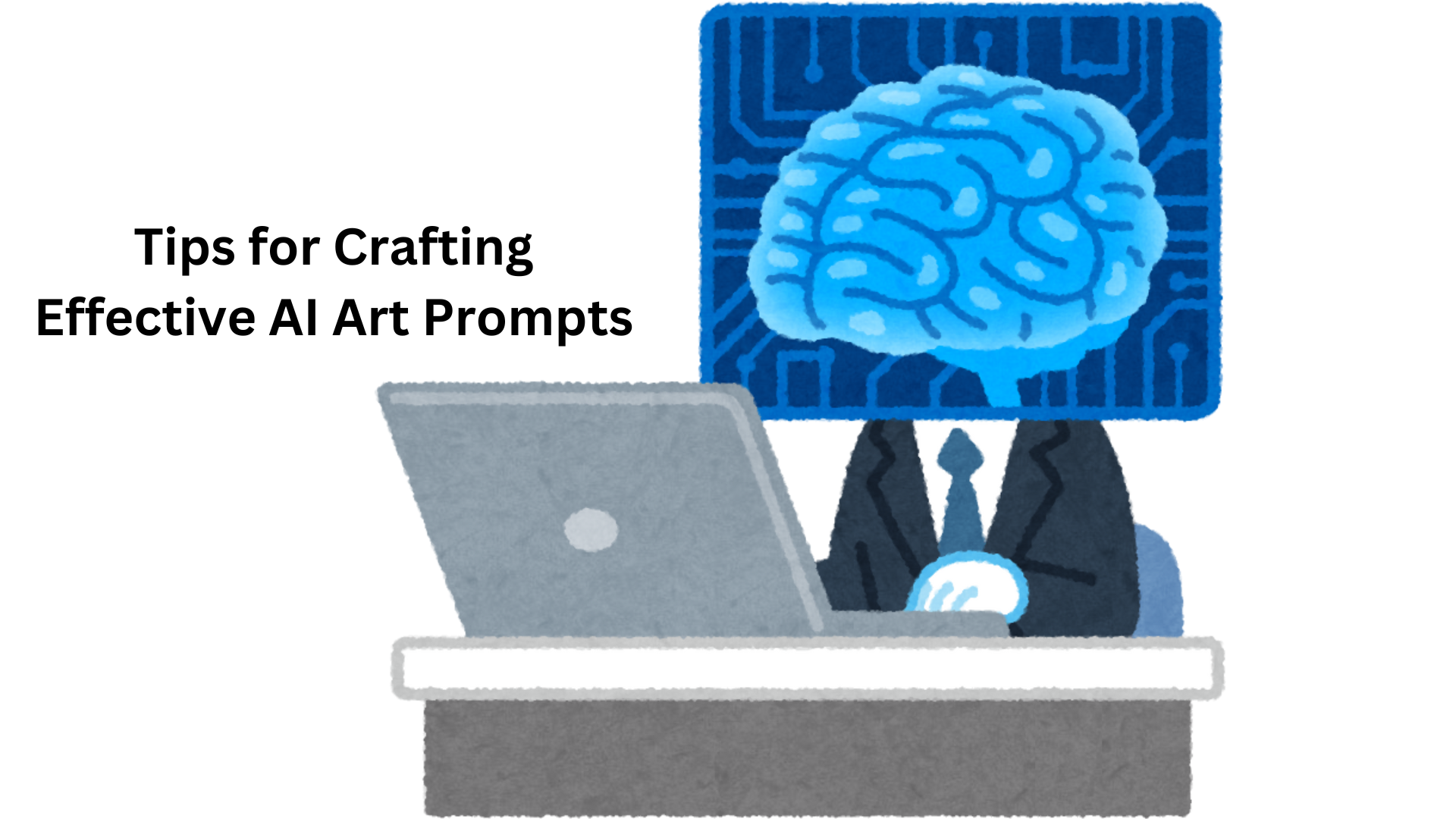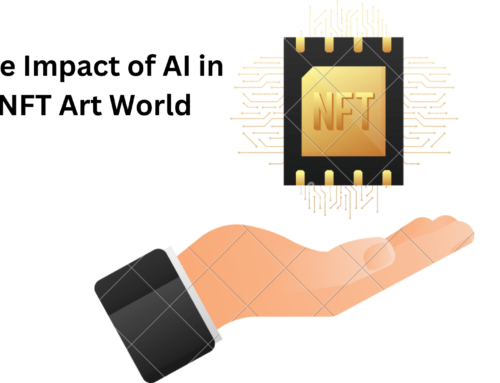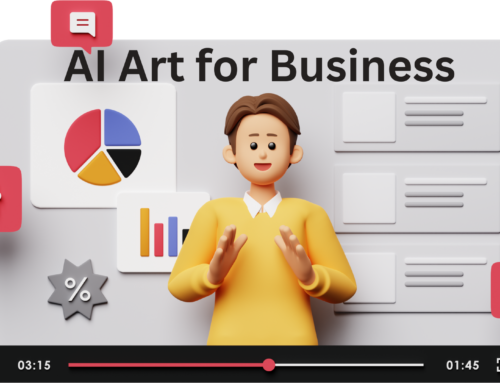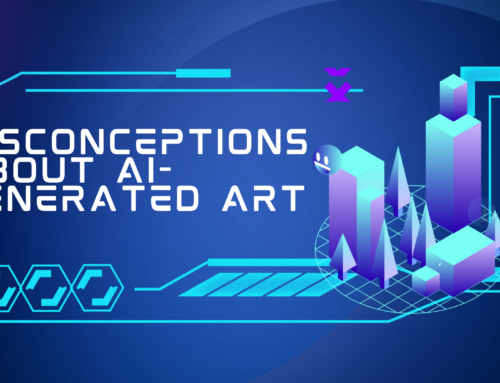Creating AI art is becoming more popular, and knowing how to write a good prompt can make a big difference. When you use an AI art generator, the key is to guide the AI with a descriptive and effective text prompt. This will help you generate AI art that matches your vision. Whether you’re using a free AI image generator or the best AI tools available, knowing how to create AI art with the right prompts is essential. In this article, we’ll share AI Art Prompt Tips to help you create stunning digital art. So, if you want to create an effective AI art prompt, stay tuned for some simple and practical advice!

What Makes an Effective Prompt
Writing effective AI art prompts is all about being clear and descriptive. When you write AI art prompts, think about the details you want in your artwork. For example, mention specific colors, styles, or subjects. These AI Art Prompt Tips help the AI tool understand what you’re looking for and give the AI model a better chance to create what you imagine.
Another tip is to use both positive and negative prompts for AI art. Positive prompts tell the AI generator what to include, while negative prompts tell it what to avoid. This balance can help you get the best results from your generative AI. Using AI in this way allows you to fine-tune the output and create more accurate and pleasing digital art.
Lastly, practice makes perfect. The more you experiment with different AI art prompt examples, the better you will become at crafting prompts for AI art. Try different combinations and see what works best with your AI model. These AI art prompt tips will help you write effective AI art prompts and guide the AI to produce the best possible results. Experiment with different AI prompts to find the best prompt to get the results you desire.
What are some effective strategies or approaches for creating compelling AI-generated artwork for competitions?
Creating compelling AI-generated artwork involves a mix of good prompts and a bit of creativity. Here is what Darryl Stevens, the CEO and Founder of Digitech Web Design Austin, says about this
“1. Combining Human Creativity with AI Capabilities: The most successful AI–generated artworks often result from a harmonious blend of human creativity and AI capabilities. Artists and designers should view AI tools as collaborators rather than mere instruments. Start by conceptualizing your vision and using AI to enhance or explore new dimensions of your ideas. This approach ensures that the final piece reflects your artistic intent while leveraging AI‘s strengths in pattern recognition, data processing, and generation.
2. Experimentation and Iteration: AI tools offer vast possibilities, but the key to creating standout artwork is experimentation. Use different AI models and algorithms to generate multiple versions of your artwork. Iteratively refine these versions by tweaking parameters, blending different AI outputs, and incorporating traditional artistic techniques. This iterative process can lead to unexpected and innovative results that push the boundaries of conventional art.
3. Understanding the Tools: Familiarize yourself with various AI art tools and platforms, such as DeepArt, DALL-E, and Artbreeder. Each tool has unique features and capabilities. Understanding these nuances allows you to select the right tool for your project and maximize its potential. Additionally, learning about the underlying algorithms can help you manipulate the AI more effectively to achieve your desired outcomes.
4. Leveraging Data and Style Transfer: AI excels at analyzing and emulating styles from existing artworks. Use style transfer techniques to apply the stylistic elements of famous artworks or specific art movements to your creations. Gather a diverse dataset of styles and elements that inspire you and use AI to blend these influences into a cohesive piece. This method can create visually striking and contextually rich artwork.
5. Incorporating Feedback: Participate in art communities and seek feedback from peers and mentors. Constructive criticism can provide new perspectives and highlight areas for improvement. Engaging with a community also keeps you informed about current trends and innovations in AI art, which can inspire your work.”
How can artists and designers leverage the strengths of AI tools while incorporating their own creative vision?
AI tools can be very powerful, but they work best when combined with your creativity. Here’s how you can leverage Artificial Intelligence:
- Use AI for Inspiration: Let AI generate initial concepts or ideas. These can spark new directions for your artwork.
- Enhance Your Work: Use AI to add elements or effects that might be time-consuming by hand.
- Maintain Your Style: Ensure the final piece has your unique touch. AI can create, but your personal style makes it stand out.
Darryl Stevens shares a few examples of successful AI-generated artworks in past competitions and what made them special
“1. “Portrait of Edmond de Belamy” by Obvious: This AI–generated artwork sold for $432,500 at Christie’s in 2018. Created using a Generative Adversarial Network (GAN), the piece stood out due to its unique blend of classic portrait style and the distinct imperfections introduced by the AI. The artwork‘s success can be attributed to the novel use of AI technology, its conceptual depth, and the conversation it sparked about AI‘s role in art.
2. “Deep Dream” by Google: Google’s Deep Dream project uses convolutional neural networks to find and enhance patterns in images, creating dream-like, surreal artworks. These pieces gained widespread attention for their psychedelic visuals and the innovative use of AI to visualize neural network processes. The striking aesthetic and the fascinating technology behind Deep Dream made these artworks memorable.
3. “AICAN” by Ahmed Elgammal: AICAN, an AI artist created by Ahmed Elgammal, produces original artworks that have been exhibited in galleries and sold at art fairs. AICAN’s success lies in its ability to generate novel and visually appealing pieces that balance between the familiar and the novel. The AI’s ability to create unique compositions that challenge traditional notions of art highlights the potential of AI in creative fields.
Creating compelling AI–generated artwork involves a blend of human creativity and AI capabilities, iterative experimentation, and a deep understanding of the tools available. By leveraging AI to enhance your artistic vision and incorporating feedback from the art community, you can produce innovative and standout pieces. The success stories of AI–generated artworks like “Portrait of Edmond de Belamy,” “Deep Dream,” and “AICAN” illustrate the power of combining AI with creative intent to push the boundaries of art.”
The Power of Short and Focused Prompts for AI art
When writing AI art prompts, keeping your prompts short and focused can be very powerful. The best AI art prompts are clear and to the point, which helps the AI understand exactly what you want. For example, if you want an art style of Van Gogh, simply mention “Van Gogh style” in your prompt. These AI Art Prompt Tips help the AI generate images more accurately.
If you’re new to AI art, start with simple and specific prompts like “sunset over mountains” or “red flowers in a vase.” These prompt ideas are easy for the AI to understand and can give you great results. Experimenting with different AI art prompt tips will help you learn what works best for your chosen AI art generation tool.
Using prompt-based art generation can be fun and creative. With some practice and these tips and tricks, you’ll be able to write AI art prompts effectively. Whether you are using a free AI art generator or a more advanced one, these AI Art Prompt Tips will help the AI create amazing art using your prompts. So, keep your prompts short and focused to make the most out of your AI art creation experience.
Understanding How AI Art Generator Interprets Prompts
Understanding how AI interprets prompts is key to creating impressive AI-generated art. The AI takes your image prompts and breaks them down to generate an image based on the details you provide. Crafting effective AI art prompts involves being specific about the content and mood of the image you want the AI to create. This means thinking carefully about every part of the prompt you write.
Here are some AI Art Prompt Tips to help you refine your prompt:
- Use descriptive words to set the scene.
- Mention the art style or mood you want.
- Be clear about the main elements you want in the image.
- Try different prompts to see what works best.
The structure of an AI art prompt can greatly affect the outcome. Experimenting with different AI art prompts will help you discover the best prompts for AI to generate art that matches your vision. Remember, refining your prompt is an ongoing process, and with practice, you’ll get better at creating effective prompts for AI-generated art.
The Future of Best AI Art Prompts
The future of AI art prompts is full of exciting possibilities. AI art prompt generators like Midjourney are becoming more advanced, allowing artists to create unique AI art by simply writing their prompt. As these tools improve, it will become even easier to craft prompts and get the AI to generate exactly what you envision.
When it comes to AI art, the key is to keep the prompt clear and descriptive. The more you describe what you want, the better the AI can create an image that matches your idea. As we continue to explore and use different AI art prompt generators, we’ll find new ways to refine our prompts and see even more amazing results. The future of AI art offers endless opportunities for creativity, making it an exciting time for artists and creators alike.
Final Thoughts on Effective AI Art Prompt Tips
In conclusion, crafting the best prompts for AI art is an art in itself. Whether you’re using simple prompts or more detailed word prompts, the goal is to clearly convey what you want to see in the image. Avoid adding too much information at the end of the prompt, as this can confuse the AI. Using examples and templates can be helpful, especially when you’re just starting out.
Remember, many AI tools are available to help you create stunning digital art. By following a step-by-step guide and experimenting with different prompts, you can find what works best for you. Keep your prompts clear and specific, and think about how each part of the image should be positioned. These AI Art Prompt Tips will help you create AI art that perfectly matches your vision. With practice, you’ll be able to create AI art that perfectly matches your vision.








Leave A Comment